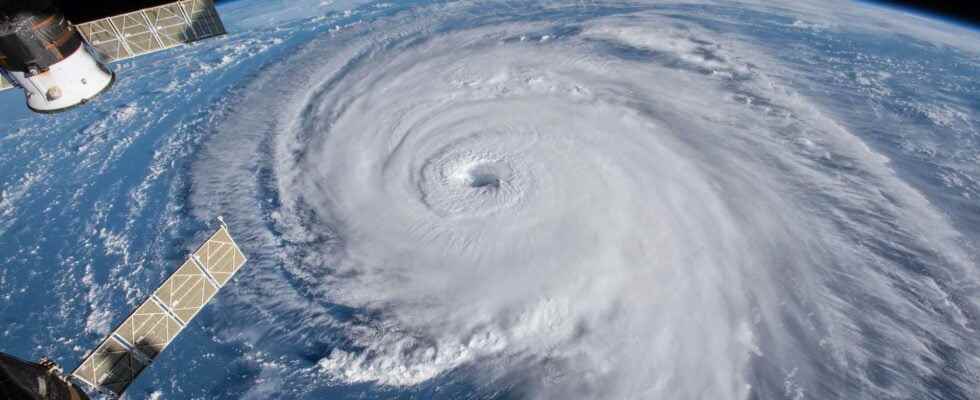Models of the history of the climate show a significant increase in hurricanes in the North Atlantic over the past 150 years.
You will also be interested
[EN VIDÉO] Incredible time-lapse of three hurricanes filmed from the ISS Three hurricanes observed from space, from the International Space Station, on August 30, 2016. Lester and Madeleine deploy over the Pacific and approach Hawaii. While Gaston, born off Bermuda, heads for the Azores.
Knowing the history of the climate could help predict how it will change over the next several decades, according to a study of National Science Foundation (NSF) published in the journal Nature Communications end of 2021. In order to obtain more reliable data than the historical documents written by humans since 1850, the American foundation preferred to use climate modeling tools. Until now, the historical data testifying to the phenomena weather report extremes on the coasts came mainly from ships or inhabitants of the islands affected by these disasters. The oldest data, compiled by human hands, dates back to 1851, and their analysis shows an upward trend in major and destructive hurricanes.
The aim of the study is to know precisely the history of cyclonic phenomena (hurricanes, typhoons, cyclones) around the world. The results of these modeling finally correspond to the data of historical reports, which had until then been seen as “biased” by human memory: with regard to the North Atlantic Ocean, the frequency of hurricanes has greatly increased over the past 150 years. Even more, the data shows that ” major hurricanes ”, the most destructive, have also been more common since 1850 than in the past. The NSF also estimates that many hurricanes do not appear in the historical data written by human hands: a part of them would never have been spotted, at the time, by ships, and would have not touched the ground. Without being visible to browsers and without having done damage on land, many hurricanes would never have been detected at sea, until these first models on the history of the climate.
Innovative modeling of the climate of the past
To estimate the number of hurricanes in the past, the scientists used the “dynamic downscaling technique”, developed by the MIT, Massachusetts Institute of Technology : it is about a modelization of the climate through the various times, in which one “plants” “seeds of hurricanes”, in order to see their evolution according to the climatic characteristics of the past. Some “seeds” germinate and flower, while others die quickly, in the words of scientists from the MIT: those that bloom give rise to hurricanes, the others disappear.
No more hurricanes in the Atlantic, but no change elsewhere
While a very marked increase has been confirmed for North Atlantic hurricanes since 1850 (both by written data from the past and by the latest climate models), apart from a “pause” in the years 1970 to 1980, the same trend was not observed with regard to cyclonic phenomena from the rest of the world. In other regions of the world, no notable variation in the frequency of these phenomena has been observed.
The increase in the number of hurricanes has therefore occurred over the long term in the North Atlantic Ocean, while the number of typhoons and cyclones in other oceans seems stable. However, the Foundation responsible for the study does not yet explain all the precise reasons for these variations, which are very regional on a global scale. Global warming and its different impacts on the regions and oceans of the world are among the avenues of study in progress.
Interested in what you just read?
.
fs11
